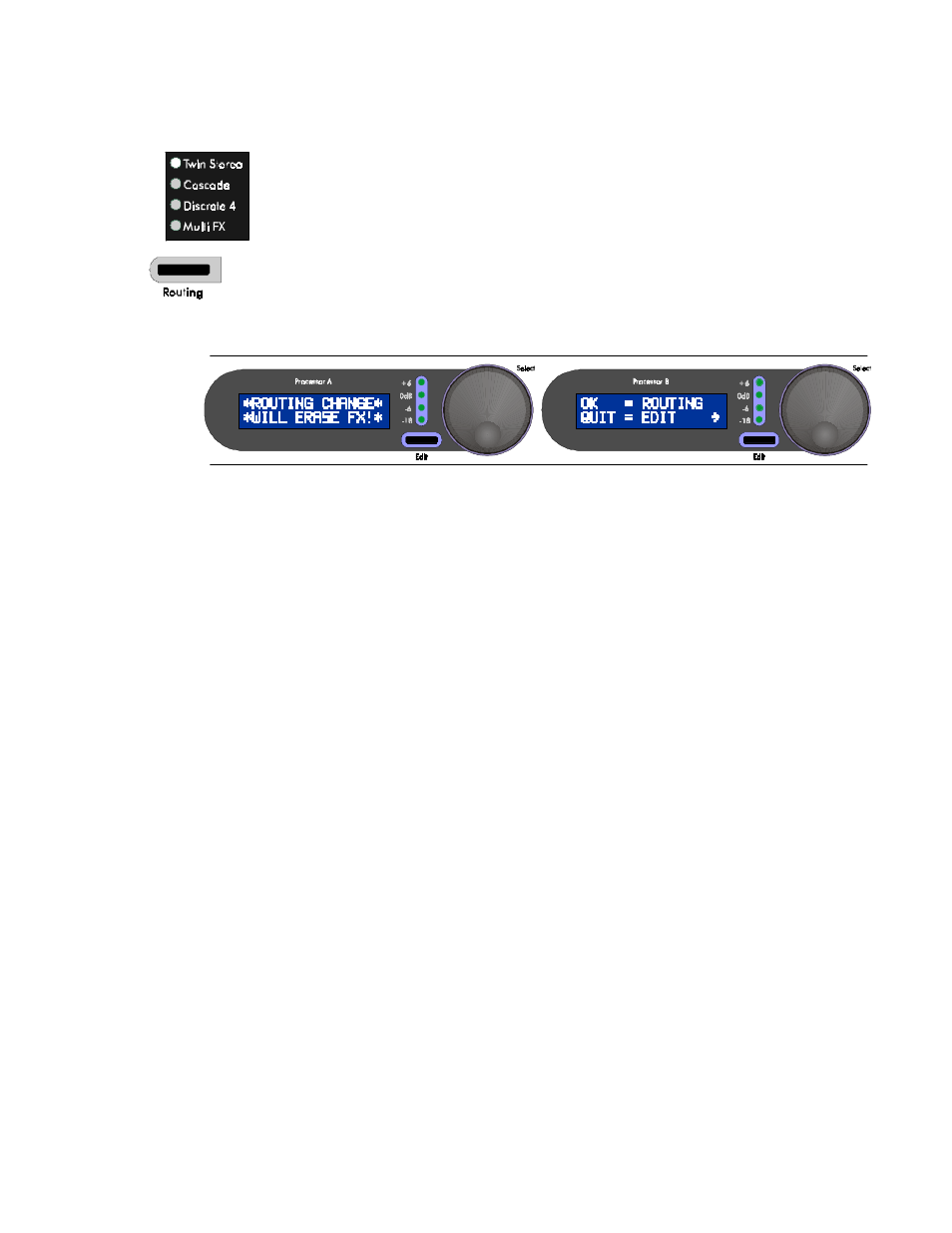ART Pro Audio DMV-Pro - Dual True-Stereo Effects Processor User Manual
Page 20

- 16 -
TUTORIAL 1: STARTING FROM SCRATCH AND CHANGING EFFECTS
Edit the Routing:
By editing any preset’s routing, you are essentially building a new preset from scratch.
When routings are changed, the DMV-PRO reconfigures its internal architecture and loads
in default effects. The preset’s former effects, class, and parameter values are all replaced.
Repeatedly press the Routing button until the Twin Stereo Routing LED is lit. If Twin Stereo
was already lit, press the Routing button a few times until it becomes lit again. Depending on the
mode that you were last in, the LCDs may initially warn you that a change of routing will erase the current
effects.
Disregard the notice; it’s exactly what we want to do!
After Twin Stereo routing has been selected, notice that both Processor LCDs are displaying the Stereo Hall
effect—this may be different from what was originally there. As mentioned, when you change routings the
DMV-PRO loads in default effects. In the case of Twin Stereo routing, the default effects are both Stereo Hall.
Don’t worry, changing effects is easy; simply turn Encoder (A) to change Processor (A)’s effect or turn
Encoder (B) to change Processor (B)’s effect. As you are scrolling through the effects, notice that all except
for Stereo Hall are flashing. The flashing is a reminder that you are not viewing the preset’s current effect, and
consequently, you will not hear what you are seeing in the LCD. When you have found the effect that you
want to hear, press the Encoder to select it and notice that it is no longer flashing. To try out more effects,
again turn the Encoder and push it to select and hear them.
Effects in the DMV-PRO are always ordered this way: Chamber, Room, Hall, Plate, Delay, Pitch, Chorus,
Flanger, Phaser, Rotary, Tremolo, and Panner. To access effects on the right side of the loaded (non-
flashing) effect, turn the Encoder to the right. To access effects on the left side, turn to the left.
Processors (A) and (B) are completely independent and can be edited at the same time. Turn and push
Encoder (B) to change Processor (B)’s effect. However, if you are only monitoring Outputs #1 and #2, you
won’t hear Processor (B)’s effect since its inputs and outputs correspond to Inputs and Outputs #3 and #4.
Mono Routings:
Multi FX and Discrete 4 routings have two separate mono effects on one or both of the processors. (See the
beginning of this tutorial for more information on routings.) Setting two effects per processor is similar to
setting one, like in True Stereo routing.
